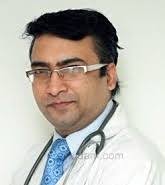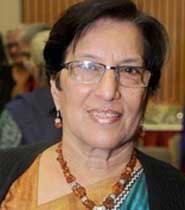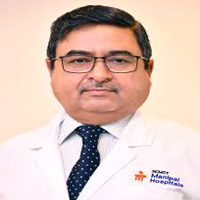Parkinson’s Disease IN INDIA
Parkinson’s Disease (PD) is a progressive neurological condition that affects millions of people worldwide, causing a wide range of physical and cognitive challenges. In India, the number of individuals diagnosed with Parkinson’s Disease has been steadily rising, largely due to the aging population and increased awareness about the disease. As the demand for effective treatment options grows, India has emerged as a leading destination for medical care, offering a combination of highly skilled professionals, cutting-edge treatments, and affordable costs.
The treatment of Parkinson’s Disease in India encompasses a variety of approaches, from medication to advanced surgical options like Deep Brain Stimulation (DBS). While the country’s healthcare infrastructure has made significant strides in recent years, the cost of treatment remains a major consideration for many patients. India’s affordability, however, combined with state-of-the-art medical technologies and international standards of care, provides an attractive option for both local and international patients seeking quality treatment at competitive prices.
This article aims to provide an in-depth look at Parkinson’s Disease, its causes, statistics, treatment options, and the associated costs of care in India. Additionally, it will highlight factors that influence treatment expenses and explore why Al Afiya is a preferred choice for Parkinson’s Disease treatment. Whether you’re seeking information for yourself or a loved one, this guide will give you the insights needed to make an informed decision about managing Parkinson’s Disease in India.
Introduction
Parkinson’s Disease (PD) is a progressive neurological disorder that significantly affects a person’s movement and coordination. It occurs when dopamine-producing neurons in a specific area of the brain, known as the substantia nigra, start to deteriorate. Dopamine is a neurotransmitter responsible for transmitting messages that help coordinate smooth and purposeful movement. As these neurons decline, individuals begin to experience symptoms such as tremors, stiffness, and difficulty in maintaining balance.
India has become a sought-after destination for Parkinson’s Disease treatment due to the availability of advanced medical technologies, highly experienced specialists, and cost-effective healthcare options. The comprehensive treatment landscape in India caters not only to local patients but also to those from across the globe seeking quality care at affordable prices.
What Causes Parkinson’s Disease?
Parkinson’s Disease is a multifactorial condition with no single identified cause. Instead, it is often attributed to a combination of genetic and environmental factors.
Neurological Basis
The core problem lies in the progressive degeneration of dopamine-producing neurons in the brain. Without adequate dopamine, the brain struggles to regulate movement and coordination.
Risk Factors
- Age: Most cases are diagnosed in individuals over 60, although early-onset Parkinson’s is not uncommon.
- Genetics: A family history of Parkinson’s Disease can increase susceptibility, with certain gene mutations linked to the disorder.
- Environmental Triggers: Exposure to certain pesticides, industrial toxins, and heavy metals has been associated with an elevated risk.
Other Influences
Recurrent head injuries, long-term use of certain medications, and underlying medical conditions may also contribute to the development of Parkinson’s.
Parkinson’s Disease: Statistics and Facts
Global Prevalence
Parkinson’s Disease affects over 10 million people worldwide, making it the second most common neurodegenerative disorder after Alzheimer’s.
Indian Perspective
In India, approximately 7 million individuals are living with Parkinson’s. Urban populations appear more affected due to improved diagnostic access, though rural areas often go underreported.
Demographics
Men are 1.5 times more likely to develop Parkinson’s than women. Most cases are identified in older adults, but around 5-10% of cases are early-onset, occurring in individuals under 50.
How Is Parkinson’s Disease Treated?
The treatment for Parkinson’s Disease focuses on managing symptoms as there is no known cure. The approach often combines medications, surgical interventions, and lifestyle modifications.
Medications
- Dopamine Replacement Therapy: The most common treatment involves drugs like Levodopa, which convert into dopamine in the brain.
- Other Pharmacological Options: MAO-B inhibitors and COMT inhibitors are prescribed to slow down dopamine breakdown.
Surgical Treatments
- Deep Brain Stimulation (DBS): A surgical procedure where electrodes are implanted in specific brain areas to regulate abnormal activity. It is highly effective for advanced cases.
- Ablative Surgeries: Less common but used in select cases to destroy affected brain tissues.
Non-Invasive Approaches
- Physiotherapy: Aims to improve mobility, posture, and muscle strength.
- Lifestyle Adjustments: Regular physical activity, a nutrient-rich diet, and stress management techniques are recommended.
What is the Treatment Cost in India?
India offers cost-effective treatment options compared to many Western countries. Below is a detailed cost table:
| Treatment Type | Cost in INR | Cost in USD |
| Medication (per year) | ₹50,000 – ₹1,50,000 | $600 – $1,800 |
| Deep Brain Stimulation | ₹7,00,000 – ₹12,00,000 | $8,500 – $14,500 |
| Physiotherapy (per month) | ₹10,000 – ₹20,000 | $120 – $240 |
What are the Factors Affecting Parkinson’s Disease Treatment Costs
Several factors influence the overall cost of treatment for Parkinson’s Disease:
- Hospital Type: Multispecialty hospitals tend to charge higher than standalone neurology centers.
- Stage of Disease: Advanced stages require more intensive care and expensive procedures like DBS.
- Location: Treatment costs vary across metropolitan cities and smaller towns.
- Post-Treatment Needs: Regular physiotherapy and medications can add to the long-term expenses.
Why Choose India for Parkinson’s Disease Treatment?
India has become a global hub for medical tourism, and Parkinson’s Disease treatment is no exception. Here’s why:
- Expertise: The country is home to some of the best neurologists and neurosurgeons specializing in Parkinson’s care.
- Technology: Indian hospitals are equipped with state-of-the-art equipment like robotic surgical systems.
- Affordability: Treatment in India can cost up to 70% less than in Western countries without compromising quality.
Why Choose Al Afiya for Parkinson’s Disease Treatment?
Al Afiya Healthcare stands out for its exceptional services:
- Highly Skilled Specialists: Experienced doctors and surgeons ensure the best outcomes.
- Comprehensive Care: From diagnosis to post-treatment recovery, Al Afiya offers end-to-end solutions.
Affordable Packages: Transparent pricing makes world-class treatment accessible.
Symptoms and Diagnosis
Early Warning Signs
Parkinson’s Disease often begins subtly, with symptoms that can easily be mistaken for signs of aging:
- A slight tremor in the hand or fingers while at rest.
- Noticeable slowness in movements (bradykinesia).
- Stiffness in limbs or a sense of heaviness.
Advanced Symptoms
As the disease progresses, symptoms become more pronounced and debilitating:
- Difficulty maintaining balance, leading to frequent falls.
- Impaired speech with slurring or monotone voice.
- Development of cognitive issues, including memory problems and mood swings.
Diagnostic Approach
Diagnosing Parkinson’s involves a combination of methods:
- Neurological Exams: Evaluating motor skills and reflexes.
- Imaging Tests: MRI and PET scans help rule out other conditions.
Response to Treatment: A positive reaction to dopamine-enhancing medications often confirms the diagnosis.
What are the Pre-Procedure Guidelines?
Preparation for Parkinson’s Disease treatment involves detailed evaluations:
- Initial Consultations: A neurologist assesses the patient’s medical history and symptoms.
- Preliminary Tests: Includes blood work, imaging studies, and cardiac evaluations for surgical candidates.
Medication Adjustments: Current medications may need modifications before starting new treatments.
What should be the Post-Procedure Care?
Recovery and long-term management are critical aspects of Parkinson’s Disease treatment:
- Regular Follow-Ups: Monitoring symptoms and adjusting treatments as needed.
- Rehabilitation: Physiotherapy and speech therapy play a key role in maintaining mobility and communication.
Lifestyle Changes: Adopting a healthy diet, regular exercise, and stress management techniques enhance quality of life.
Top Parkinson’s Disease Doctors in India
The right doctor to consult for a Parkinson’s Disease case.
Dr. Sumit Singh
Year of experience: 25
Chief and Senior Consultant at Artemis Hospital
Dr. Manvir Bhatia
Year of experience: 23 Years of Experience
Dr. Praveen Gupta
Year of experience: 15 Years of Experience
Dr. Rana Patir
Year of experience: 32
Consultant at Fortis Memorial Research Institute, Gurgaon
Dr. Sandeep Vaishya
Year of experience: 36
HOD and Senior Consultant at Fortis Memorial Research Institute, Gurgaon
Dr. Rohan Sinha
Year of experience: 16 years of experience
Director & Senior Consultant at Jaypee Hospital
Dr. Sudheer Kumar Tyagi
Year of experience: 38
Senior Consultant at Indraprastha Apollo Hospital, Delhi
Dr. Veena Kalra
Year of experience: 37 Years of Experience
Dr. Vikas Gupta
Year of experience: 31 years of experience
Looking For The Best Doctor & Hospital?
Fill up the form and get assured assitance within 24 hrs!
FAQs
- What are the best hospitals for Parkinson’s Disease treatment in India?
Some of the leading hospitals in India for Parkinson’s Disease treatment include:
- All India Institute of Medical Sciences (AIIMS), New Delhi
- Fortis Memorial Research Institute, Gurgaon
- Apollo Hospitals, Chennai
- Narayana Health, Bangalore
- Medanta – The Medicity, Gurgaon
- Who are the top doctors for Parkinson’s Disease in India?
Renowned doctors specializing in Parkinson’s Disease in India include:
- Dr. P. K. Sethi (AIIMS, New Delhi)
- Dr. Sushil Kumar (Fortis Memorial Research Institute, Gurgaon)
- Dr. Sanjay Ghosh (Narayana Health, Bangalore)
- Dr. Rajeev Rathi (Medanta – The Medicity, Gurgaon)
- Dr. V. K. Jain (Indraprastha Apollo Hospital, New Delhi)
- Is Parkinson’s Disease treatment available in all major Indian cities?
Yes, most major cities such as Delhi, Mumbai, Bangalore, Chennai, and Hyderabad have top hospitals and specialists offering treatment for Parkinson’s Disease.
- What is the first step in the treatment process for Parkinson’s Disease?
The first step is a detailed neurological evaluation followed by imaging tests such as MRI or PET scans to confirm the diagnosis. - How effective is Deep Brain Stimulation (DBS) for Parkinson’s Disease treatment?
DBS is highly effective for advanced Parkinson’s Disease cases. It improves motor symptoms such as tremors, stiffness, and slowness of movement, significantly enhancing the quality of life. - What are the costs of Parkinson’s Disease treatment in India?
The cost of Parkinson’s treatment varies depending on the treatment method. Medications typically cost ₹50,000 to ₹1,50,000 per year, while Deep Brain Stimulation (DBS) surgery can cost between ₹7,00,000 and ₹12,00,000. - Is Parkinson’s Disease a genetic disorder?
While most cases of Parkinson’s Disease are sporadic, about 10% of cases have a genetic component. People with a family history of Parkinson’s are at higher risk of developing the disease. - Can Parkinson’s Disease be completely cured?
Currently, there is no cure for Parkinson’s Disease. However, with the right treatment, symptoms can be managed effectively, and patients can maintain a good quality of life for many years. - Is the role of physiotherapy in Parkinson’s Disease treatment?
Physiotherapy plays a crucial role in improving mobility, strength, and balance, helping to reduce the risk of falls and improve overall motor functions in Parkinson’s patients. - Are there any lifestyle changes that can help manage Parkinson’s Disease?
Yes, adopting a healthy lifestyle can help manage symptoms. Regular physical exercise, a nutritious diet, stress management, and maintaining a positive mental outlook are beneficial.
11. How long does it take to see improvements after treatment for Parkinson’s Disease?
The improvement timeline varies depending on the treatment approach. For medication, noticeable symptom relief can be seen within days to weeks. For surgical treatments like Deep Brain Stimulation, improvements may take several months for full effects.
Get FREE Evaluation
Treatment plan and quote within within 24 hrs!
Let us help you
Get your personalized Estimate Now
Top Doctors & Surgeons in India
Best Hospitals in India
Best Treatments in India
Indian Medical Visa From
Copyright © 2025 Al Afiya Medi Tour | All Rights Reserved.
































